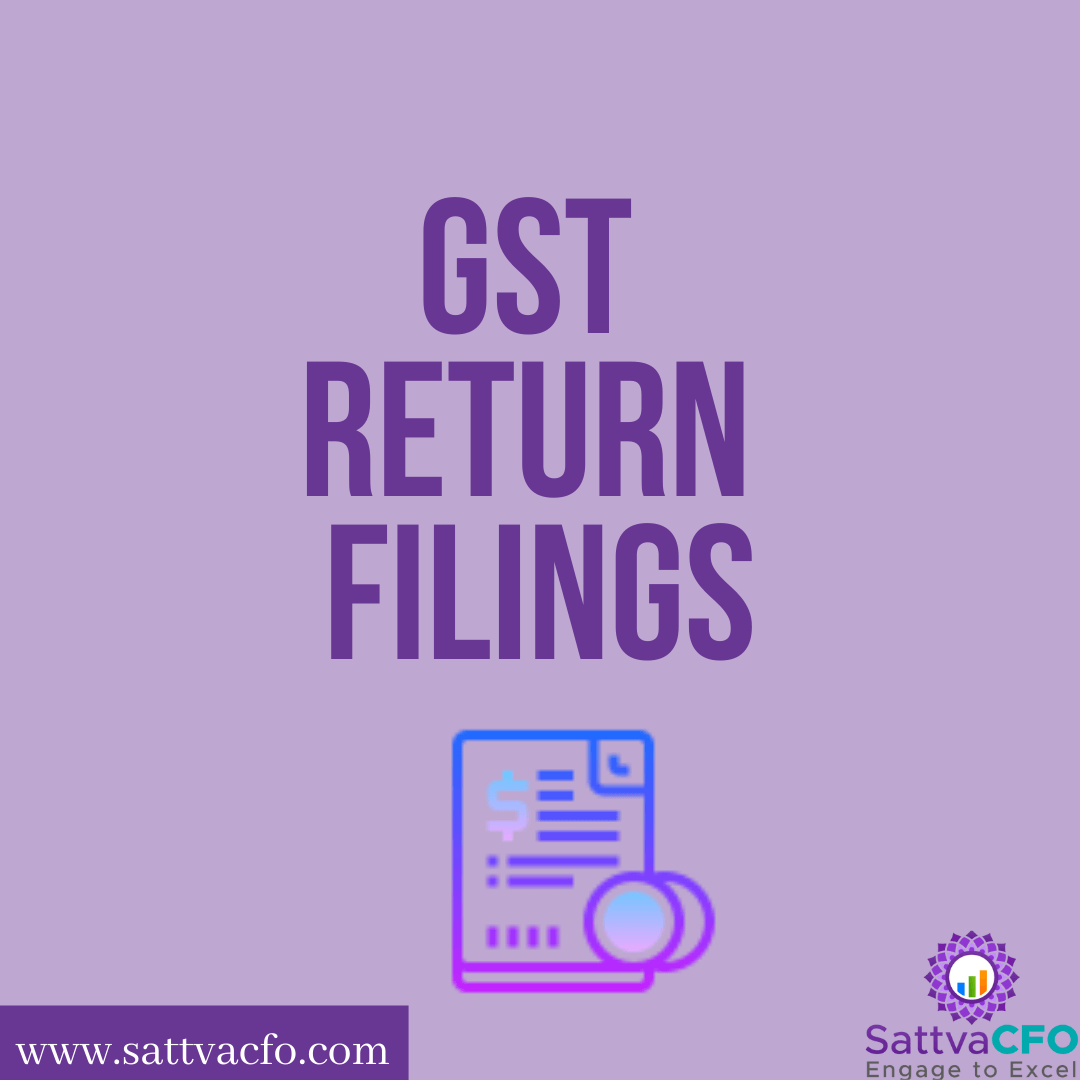The Goods and Services Tax (GST) is an indirect tax imposed in India on the supply of goods and services. Every GST-registered taxpayer is required to file GST returns. The government uses these returns to figure out how much tax it owes. GST is a developing taxation system, and the government is constantly changing the laws and regulations that regulate it. As a result, it’s critical to keep current in order to submit your returns appropriately. GST Return Filings, gst return filing status, how to file gst return online.
What is GST Returns?
Every individual who is registered under the GST Act is required to file online reports on a regular basis to report sales and purchases, as well as the tax collected and paid on them. Payment of tax due is required prior to filing the return; else, the return would be void.
Who should file GST Returns?
The GST (Goods and Services Tax) is an indirect tax imposed in India on the supply of goods and services. Every GST-registered taxpayer is required to file GST returns. The government uses these returns to figure out how much tax it owes. GST is a developing taxation system, and the government is constantly changing the laws and regulations that regulate it.
What are the documents required for filing GST Returns?
- B2B bills are invoices issued to those who have a GSTIN.
- B2C bills or invoices are issued to those who don’t have a GSTIN. Only when the total value exceeds 2.5 lakhs must this be reported.
- Interstate sales are consolidated.
- A summary of all items sold by HSN.
- Any other credit or debit cards, as well as advance receipts.
How to File GST Returns?
The process for filing a GST return is easy and clear, and it may be done online. To use the GST portal, the enrolled taxpayer must utilise their login credentials. Go to the returns page after you’ve logged in and fill out the relevant forms with the necessary information. The computed tax payable is also paid off at the time of the final filing of the returns. GST Return Filings, gst return filing status, how to file gst return online.
What are the benefits of filing GST Returns?
GST removes the effect of cascading taxes.
Previously, there were many situations where a single transaction resulted in the payment of tax on tax. You are no longer need to pay tax on tax because GST replaced numerous other taxes such as central excise duty, service tax, customs duty, and state-level value-added tax. You will save money as a result of this.
Increased criterion
The threshold for GST is an aggregate turnover of more than 40 lakhs in the case of commodities and more than 20 lakhs in the case of services. This implies that small enterprises that fall below this threshold are exempt from paying GST.
Startups and e-commerce firms will find it easier.
The GST system has made tax management easier for startups and e-commerce businesses. Different tax regulations in different states harmed e-commerce, which the GST has since eliminated.
A better-organized system
The tax filing system was disorganized before GST. All taxes are now paid online, and major difficulties associated with tax filing have been avoided due to the GST implementation. GST Return Filings, gst return filing status, how to file gst return online.
Types of Returns
There are multiple returns under the GST regime. The most commonly used return will be GSTR 1, 2, 3, 4 & 9. GSTR 1, GSTR 2 & GSTR 3 will be submitted by all businesses on a monthly basis along with GSTR 9 on an annual basis. GSTR 4 is submitted by composition taxpayers on a quarterly basis.
Returns for a Normal Taxpayer
| RETURNS | PARTICULAR | DUE DATE |
| GSTR-1 | Details of Outward Supplies | 10th of the next month |
| GSTR-2 | Details of Inward Supplies | 15th of the next month |
| GSTR-3 | Monthly Return for tax payment | 20th of the next month |
| GSTR-9 | Annual return | 31st December of next financial year |
Returns for a Composition Taxpayer
| RETURNS | PARTICULAR | DUE DATE |
| GSTR-4 | Quarterly return | 18th of month succeeding every quarter |
| GSTR-9 | Annual return | 31st December of next financial year |
Extra Returns based on Nature of Business
| RETURNS | PARTICULAR | DUE DATE | Filed By |
| GSTR-5 | Details of Inward and outward Supplies. Tax liability computation | 20th of the next month. For last month either 20th of next month or 7 days after expiration, whichever is earlier. | Non-Resident Taxable Person |
| GSTR-6 | Distribution of Input Tax credit | 13th of next month | Input Service Distributor |
| GSTR-7 | TDS details or any related modifications | 10th of next month | Authorities deducting tax at source |
| GSTR-8 | Details of supplies effected through them. | 10th of next month | E-commerce Operator who collect tax at source |
How to file GST Returns?
The GST site allows you to file your GST online. That said, the process of submitting a GST return may be perplexing and tedious, not to mention simple to get it wrong and get penalized for it.
Step 1: Notification of deadlines
We keep you up to date on future return filing deadlines. In this manner, we can assure timely submission and avoid the late filing penalty.
Step 2: Fill in and submit your papers.
Filing returns necessitates a great deal of information and documentation (mentioned above). For uploading the papers, we offer you your dashboard. The dashboard will make it easier for you to keep track of your records by streamlining the procedure. You can post transactions as they happen.
Step 3: Review your work before submitting it.
You will get the completed paperwork for inspection and approval. Only after your permission do we file the returns. Following the filing, an ARN number will be produced and shared with you. Once the procedure is complete, we will acknowledge the email address you gave during registration.
How to check GST Returns Status?
- Go to the GST website.
- To track the status of your application, go to ‘Services’ -> ‘Refunds’ -> ‘Track Application Status.’
- Click ‘Search’ after entering the ARN.
- Login to your GST account to get more information or take action.
GST Penalty & Late Fees
On the due date for GST payment, interest is computed at 18 percent per year. It must be determined by the taxpayer based on the amount of unpaid tax.
The late costs are Rs. 100 per day and are imposed in accordance with the Act. The highest sum that may be won is 5000 rupees. The rupees 100 late fee applies solely to SGST and CGST; it does not apply to IGST.
The GST charge for late filing of GSTR-1, GSTR-3B, GSTR-4, GSTR-5, and GSTR-6 after the due date is Rs. 50 per day of delay.
Late costs for NIL returns are 20 rupees per day as a GST penalty. This penalty applies to GSTR-1, GSTR-3B, GSTR-4, and GSTR-5.
Upcoming Due dates of GST return
- GSTR 1: The 11th of the next month
- GSTR 3B: The 20th of the month following.
- CMP 08: The 18th of the month following the quarter of the fiscal year in question.
- GSTR 4: The 18th of the month after the end of the quarter.
- GSTR 5: The 20th of the next month
- GSTR 6: The 13th of the next month
- GSTR 7: Tenth of the next month
- GSTR 8: The tenth of the next month
- GSTR 9: The fiscal year ends on December 31st.
- GSTR 10: Within three months of the cancellation date or the date of the cancellation order, whichever comes first.
- GSTR 11: The 28th day of the month after the month in which the statement was filed.
FAQs on GST Return Filing
Who should file GST Returns?
Every individual or organization that is GST registered is obliged to file a GST return for the specified time. To comply with GST laws, even those companies with a GST registration but no activity must file a GST Nil Return. GST Return Filings, gst return filing status, how to file gst return online.
What is the time limit for filing a GSTR-1 return?
The 10th of each month is generally the deadline for filing the GSTR1 return. However, the GSTR1 return is due on the 10th of October for the month of July 2017. The GST Council has yet to set the deadline for filing the other GSTR1 returns.
How often would I have to file GST Returns?
Regular taxpayers would be required to file GSTR-1 (details of outbound supplies), GSTR-2 (details of inbound supplies), and GSTR-3 (details of inbound supplies) (monthly return). GSTR-1 is due on the 10th of every month, GSTR-2 is due on the 15th of every month, and GSTR-3 is due on the 20th of every month. Compounding taxpayers are required to file GSTR-4 on the 18th of the month after the quarter.
In addition to the monthly or quarterly filings, all GST-registered individuals and businesses must complete an annual return. The yearly GST return is due on the 31st of December following the conclusion of the financial year.
What information is required to be filed in GSTR-1?
The taxpayer must include the following information in his or her GSTR1 return:
- Basic information on the taxpayer, including GSTIN.
- The time period for which the Return is filed.
- Information at the invoice level
- Invoices for businesses to businesses
- B2C bills worth more than Rs.2.5 lakhs
- B2C bills with a value of less than Rs.2.5 lakhs
- Invoices are exported.
- Summary of Documents Issued HSN Code-by-HSN-Code Sales Summary.
How to file GST Returns?
GST returns must be submitted electronically. There will also be the option of preparing returns offline and then uploading them to an internet portal.
What is the meaning of “details of outward supplies”?
The term “details of outward supplies” in GST refers to information about sales transactions in a month, such as invoices issued, debit notes, credit notes, and amended invoices.
Can GST Return be Revised?
A GST Return would not be subject to any procedure or review. All unreported invoices from the prior tax period must be included in the current month’s return, along with any relevant interest.
Can GSTR-1 return be rectified?
Yes, any registered taxable person who has submitted a GSTR1 return can correct it if a mistake or omission is discovered. Corrections can be filed within the tax period in which the error or omission was discovered. Payment of tax and interest can also be paid within the period of discovery of the error or omission if there is a short tax payment. GST Return Filings, gst return filing status, how to file gst return online.
What is the penalty for not filing GST Returns?
The GST Department will trace all non-filers of GST returns and submit a list of GST return defaulters to the appropriate GST authorities for follow-up and enforcement action. The GST law will also impose an automatic late charge on non-filers, and late filers of GST returns.
What is the time limit for filing GST return rectification?
A taxpayer can correct a GST return until September after the end of the financial year to which the facts relate, or until the appropriate annual return is filed, whichever comes first.
Who should file the GSTR-1 return?
A taxpayer can correct a GST return until September after the end of the financial year to which the facts relate, or until the appropriate annual return is filed, whichever comes first.
How to file a GSTR-1 return?
The GST site allows you to file your GSTR1 return online. To do so, establish an account, update the information of sales made during the month, and then click on upload GST return to file.
How to mention HSN Code in the Invoice?
All taxpayers with a turnover in the previous financial year of more than Rs. 5 crores must mention their HSN code (4-digit) for Goods and Services Accounting Codes (SAC) for Services. (For the first year of GST operations, self-declaration of turnover in the previous financial year will be used as the basis because all India turnover data will not be available in the first year.) The preceding financial year’s GST turnover will be utilized to meet this requirement from the second year forward.
What invoices should be uploaded to GST Portal?
Invoice level data such as client GSTIN, the item-wise value of supply, amount of tax applicable, place of supply, date of invoice, and invoice number should be submitted for all B2B supplies (whether inter-State or intra-State).
When the supply value exceeds Rs.2.5 lakhs, suppliers shall provide invoice level data comparable to B2B invoices for all B2C supplies (including non-registered Government organizations, Consumer/person dealing in exempted/NIL rated/non-GST products or services).
What is an E-way Bill?
An EWay Bill is an Electronic Waybill that a GST registered individual must get when moving items in a vehicle with a value greater than $50,000. The e-Way Bill Portal (https://ewaybillgst.gov.in/) is where you may register for an e-Way bill.
Is GST paid every month?
Yes, GST must be paid on the due date each month. You must first pay GST before filing returns.
Is it mandatory to file a GST return every month?
Every registered taxpayer is required to file GSTR-1 once a month. If you choose the QRMP scheme, however, you only have to file quarterly returns.
Is the GST threshold limit the same for all Indian states?
No, the north-eastern states (special category states) have a lower threshold than other states. The threshold for the sale of products is 20 lakhs, while the threshold for the sale of services is 10 lakhs.
Why choose SattvaCFO for filing GST Returns?
Our GST return filing solution makes it simple for taxpayers like you. Our experts will handle the paperwork, so you won’t have to worry about staying up to speed on legislation or meeting deadlines.
Outsource GST Compliance to SattvaCFO
To relieve your compliance load and focus your efforts on expanding your business, outsource your GST compliance to SattvaCFO. GST Return Filings, gst return filing status, how to file gst return online.




